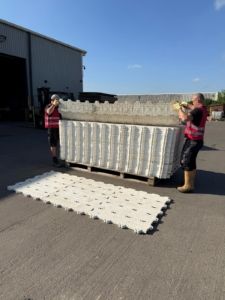Crew Safety Induction
This induction is for all crew working for EPS installing our products and services across the UK.
Site Inductions
Behaviour
Yours, ours, and everyone else’s safety
If you’re not sure
Whilst on-site there is a ZERO tolerance for being under the influence of alcohol or illegal drugs.
Minimum PPE to be worn whilst on site
Hi -Viz
Steel/ Composite Toe Protective Footwear
Don’t forget your gloves.
T-I-L-E
T stands for task. Think about the nature of the manual handling task itself:
I stands for individual. Think about who will be carrying out the manual handling task:
L stands for load. Think about the object or person being moved:
E stands for environment. Think about where the load is being moved from and to:
Please watch this video below which shows you the Supertrac and how to handle it.
Installation

Recovery
Please watch this video below which shows you the ArmorDeck and how to handle it.
Installation
Recovery
Please watch this video below which shows you the Gig Barrier and how to handle it.
Installation
Recovery
Installation
RELLY and Vacuum Attachement
Recovery
Thank you for taking the time to complete this induction. If you have any questions or queries please contact your line manager.